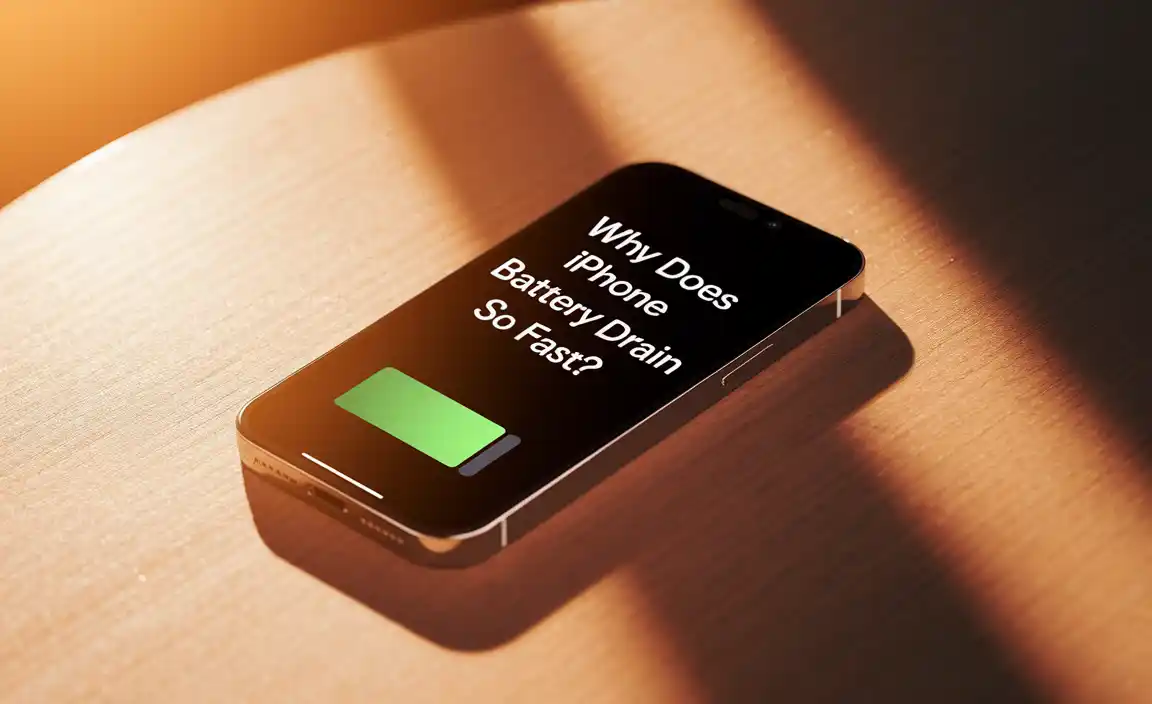Quick Summary: Charging a lithium car battery for electric cars is straightforward with the right charger and steps. Ensure compatibility, use dedicated EV charging stations or home chargers, and follow manufacturer guidelines for safe, efficient power-ups to keep your electric vehicle ready for the road.
Hey there, fellow drivers! Ever look at your electric car and wonder, “How exactly do I top up that big battery?” It might seem a bit different from filling up a gas tank, but I promise, it’s much simpler than you think. Many of us are making the switch to electric vehicles, and understanding how to charge them is key to enjoying the ride without any fuss.
The good news is that charging an electric car’s lithium battery is designed to be user-friendly. There’s no need for complex technical know-how. We’ll walk through everything you need to know, from picking the right charger to plugging in at home or on the go. Think of me as your friendly guide, here to make sure you feel confident and completely at ease with your EV’s charging routine. Ready to learn how to keep your electric wheels powered up?
Understanding Your Electric Car’s Lithium Battery
Electric cars (EVs) use large lithium-ion battery packs to store energy. These are like the powerhouses that keep you moving. You might be familiar with smaller lithium-ion batteries found in your phone or a power bank, but car batteries are on a whole different scale! They’re built for longevity and to deliver consistent power. Unlike traditional car batteries that mostly just start the engine, an EV’s battery is the primary energy source for propulsion.
These batteries are incredibly advanced, designed with sophisticated management systems to ensure safety and optimal performance. They manage everything from charging speeds to temperature control. So, while you don’t need to understand all the intricate details, knowing they are smart and self-regulating can be reassuring.
Why Lithium-Ion?
- Energy Density: They can store a lot of energy in a relatively small and light package. This is crucial for giving your EV a good driving range.
- Lifespan: Lithium-ion car batteries are built to last for many years and numerous charging cycles.
- Efficiency: They convert electrical energy into power for driving very efficiently.
Charging Your Electric Car: The Basics
Charging your electric car is all about connecting it to a source of electricity. The type of charger and the speed at which it charges depend on a few things: the car itself, the charging equipment you use, and where you’re charging.
Think of it like charging your phone. You have different chargers – some faster, some slower. For electric cars, it’s similar, but the infrastructure is a bit more specialized. The goal is always to deliver electricity safely and efficiently to replenish the battery’s energy storage.
Types of EV Charging
There are generally three levels of charging for electric cars:
- Level 1 Charging: This is the slowest type. It uses a standard household outlet (like the one you use for your phone charger, but with a thicker adapter for your car) and takes the longest to charge the battery. It’s great for overnight charging if you don’t drive many miles daily.
- Level 2 Charging: This is the most common type for home and public charging stations. It requires a dedicated 240-volt outlet (similar to what an electric dryer uses) and is significantly faster than Level 1. Most EV owners install a Level 2 charger at home.
- DC Fast Charging (Level 3): These are the rapid chargers you see at public charging stations. They deliver a very high amount of power quickly to get your battery back up to a substantial charge in a short amount of time, perfect for long road trips.
Essential Tools and Accessories for Charging
When it comes to charging your electric car, you need a few key pieces of equipment. Think of these as your essential toolkit for powering up:
1. The Charging Cable (EVSE – Electric Vehicle Supply Equipment)
This is the cable that connects your car to the power source. It’s not just a simple wire; it has smarts built in to communicate with your car and ensure safe charging. These come with different connector types depending on your car and the charging station. For example, J1772 is common in North America for Level 1 and Level 2, while CCS and CHAdeMO are used for DC fast charging.
2. The Charging Station (Wall Charger or Portable Charger)
This is the unit that supplies the electricity. For home charging, you’ll typically install a Level 2 charging station on your wall. Portable Level 2 chargers are also available, which you can plug into a suitable outlet without a permanent installation. For public charging, you’ll use the stations provided at various locations.
3. The Adapter (If Needed)
While most modern EVs come with the necessary equipment, sometimes you might need an adapter. For instance, if you have a public charging station that uses a different plug type than your car’s socket (though less common with standardization), an adapter might be useful. Also, if you’re using a generator or a special inverter in an emergency, adapters might be required.
4. A Reliable Power Source
This is simply the electricity itself! For home charging, it means a properly installed electrical circuit. For public charging, it’s the grid supplying power to the charging stations. It’s important to note that, unlike a car battery that powers your engine, the EV’s main lithium battery is charged from the electrical grid.
Step-by-Step Guide: Charging Your Electric Car Battery
Let’s get practical! Charging your EV is a simple process. We’ll break it down so you can do it with confidence.
Step 1: Park Your Electric Car
First, park your electric car close to the charging point. Make sure the charging port on your car is accessible and near the charging station or outlet.
Step 2: Prepare the Charger
For Home Charging (Level 2):
- Ensure your Level 2 charging station is powered on.
- Take the charging cable from its holster or storage.
For Public Charging:
- Follow the instructions on the charging station’s screen. This usually involves using an app, a payment card, or a membership to activate the charger.
- Once activated, the station will typically extend or present its charging cable.
Step 3: Connect the Charger to Your Car
Take the charging connector (the end of the cable that plugs into the car) and firmly insert it into your car’s charging port. You should hear or feel a click, indicating it’s securely connected. Your car’s dashboard or a light on the charger will usually confirm the connection has been made.
Step 4: Start the Charging Process
For Home Charging: Once connected, charging usually starts automatically after a brief handshake between the car and the charger. Some chargers have a button or require a confirmation through a mobile app.
For Public Charging: After connecting the cable, the charging process will begin automatically, or you might need to press a ‘Start’ button on the station. The station’s screen will usually show that charging is in progress.
Step 5: Monitor Charging (Optional but Recommended)
You can often monitor charging progress in a few ways:
- Your Car’s Dashboard: Most EVs will display the current charge level, estimated time to full, and charging speed.
- Your Car’s Mobile App: Manufacturers often provide apps that let you track charging remotely, set charging schedules, and receive notifications.
- The Charging Station’s Screen: Public chargers will show real-time charging data.
Step 6: Stop Charging
When your car reaches the desired charge level, or when you need to leave:
For Home Charging: Simply unlock your car, then press the release button on the charging connector (if it has one) and remove it from the car. Some cars or chargers might require you to initiate the stop via the car’s screen or app.
For Public Charging: You’ll usually need to unlock the charger via the station’s screen, an app, or by tapping your payment card again. Then, unplug the connector from your car.
Step 7: Store the Charger
Once unplugged, store the charging cable neatly to prevent damage. Most home charging stations have holsters for the connector, and public chargers retract or need to be placed back on their mounts.
Charging Speed: What to Expect
Charging speed is a big factor for EV owners. It’s measured in kilowatts (kW). The faster the charging speed, the less time you’ll spend plugged in.
Here’s a general idea of what different charging levels offer:
| Charging Level | Typical Power Output (kW) | Miles Added Per Hour (Approx.) | Use Case |
|---|---|---|---|
| Level 1 | 1.4 – 2.4 kW | 2-5 miles | Overnight trickle charging, minimal daily driving |
| Level 2 | 3.7 – 22 kW (common at 7-11 kW) | 15-60 miles | Home charging, public charging, overnight charging for longer commutes |
| DC Fast Charging (Level 3) | 50 kW – 350+ kW | 100+ miles in ~20-30 mins | Road trips, rapid top-ups |
Factors Affecting Charging Speed:
- Charger Power: A more powerful charger (higher kW) will charge faster, assuming your car can accept that power.
- Car’s Charging Capability: Your EV has a maximum rate it can accept. A powerful charger won’t charge your car faster than its limit.
- Battery Temperature: Batteries charge faster when they are at an optimal temperature. Extreme heat or cold can slow down charging.
- Battery State of Charge: Batteries typically charge fastest when they are at a lower state of charge (e.g., below 50%). As they get fuller, the charging rate often slows down to protect the battery.
Safety First! Important Charging Tips
Safety is always the top priority. Here are some crucial tips for charging your electric car battery:
- Use Approved Equipment: Always use charging equipment that is certified and meets safety standards. This includes the cable, the charging station, and any adapters. For home installations, ensure it’s done by a qualified electrician. Check out resources from the U.S. Department of Energy for general EV charging safety information.
- Inspect Cables and Connectors: Before each use, check the charging cable and connector for any signs of damage – cuts, fraying, or bent pins. If you see any damage, do not use it and get it replaced.
- Keep Water Away: While EV charging equipment is designed for outdoor use and is water-resistant, avoid charging in extremely wet conditions if possible. Never submerge charging equipment in water.
- Ensure Proper Ventilation: Charging stations may generate some heat. Ensure there’s adequate ventilation around the charging unit.
- Don’t Overload Circuits: If you’re using a home charger, ensure it’s connected to a dedicated circuit. Avoid plugging other high-power appliances into the same circuit while charging your EV.
- Follow Manufacturer Instructions: Always refer to your electric car’s owner’s manual and the charging equipment manufacturer’s instructions for specific guidance.
- Child Safety: Keep children and pets away from the charging area and cables during charging.
Maintaining Your Car Battery While Charging
Your electric car’s lithium battery pack is designed to be durable, but mindful charging habits can help maximize its lifespan and efficiency.
Charging Habits for Battery Health
- Avoid Deep Discharges: Try not to let your battery drop to 0% charge too often. Most EVs have systems that prevent this, but if you can, plug in before it gets critically low.
- Don’t Always Charge to 100%: For daily driving, charging to 80% or 90% is often recommended by manufacturers. Constantly charging to 100% can put a bit more stress on the battery over time. Save the 100% charge for long trips.
- Mind the Temperature: If possible, avoid charging your car in extreme heat or cold for extended periods, especially charging to 100% in very hot weather. Your car’s battery management system is usually good at handling this, but it’s an extra precaution.
- Regular Charging is Good: Unlike some older battery types, regularly topping up your EV battery is generally fine and can be beneficial.
What About Battery Replacement?
EV batteries are designed to last many years, often well beyond the typical warranty period (which is usually 8 years or 100,000 miles). If you ever experience issues, consult your dealership or a qualified EV technician. Battery replacement is a significant expense, but it’s becoming less common as battery technology improves.
Common Charging Problems and How to Solve Them
Even with advanced technology, you might encounter minor hiccups. Here’s how to handle them:
| Problem | Possible Cause | Solution |
|---|---|---|
| Charger not connecting or communicating | Loose connection, car charging port issue, station fault, software glitch | Check both ends of the cable are firmly plugged in. Try a different charging station. Restart your car. Check your car’s manual for troubleshooting. |
| Slow charging speed | Using Level 1 charger, car’s charge setting, battery temperature, grid issues | Switch to a Level 2 or DC Fast Charger if available. Check car’s charging settings. Ensure battery is at optimal temperature. Contact charger provider for station issues. |
| Charging stops unexpectedly | Interruption in power, car or charger fault, safety shutdown | Check power source. Examine cables for damage. Restart charging cycle. Contact charger support or vehicle manufacturer. |
| Payment issues at public charger | Card declined, network error, app problem | Try a different payment method. Ensure you have a stable internet connection for the app. Contact the charging network’s customer service. |
| Error message on car or charger | System fault, sensor issue, communication breakdown | Note down the error message. Consult your car’s manual. Contact your car dealership or the charging station provider. |
Frequently Asked Questions (FAQ)
Q1: Can I charge my electric car at any outlet?
You can technically plug into a standard household (Level 1) outlet, but it will be very slow. For faster and more practical charging, a Level 2 charger, which uses a 240-volt outlet, is highly recommended for home use.
Q2: How long does it take to charge an electric car battery?
It varies greatly depending on the charger type and your car’s battery size. Level 1 can take days for a full charge. Level 2 typically takes 4-10 hours for a full charge. DC Fast Charging can add 100-200 miles of range in about 20-30 minutes.
Q3: Do I really need a dedicated home charger (Level 2)?
While not strictly required, a Level 2 home charger makes EV ownership much more convenient, especially if you drive more than 30-40 miles a day. It ensures your car is fully charged every morning, ready for your commute.
Q4: Is it bad for my car’s battery to charge it every day?
No, it’s generally not bad. In fact, regularly topping up your battery, especially by charging to 80-90% for daily use, is often better for the long-term health of the lithium-ion battery than letting it get very low and then always charging to 100%. Always follow your car manufacturer’s recommendations.
Q5: What happens if I use the wrong type of charger?
Modern EVs and chargers are designed to only connect and charge if they are compatible. You generally cannot plug the wrong connector into your car. If you try to use a charger that isn’t designed for your vehicle, it simply won’t initiate a charge. Always ensure your charger





